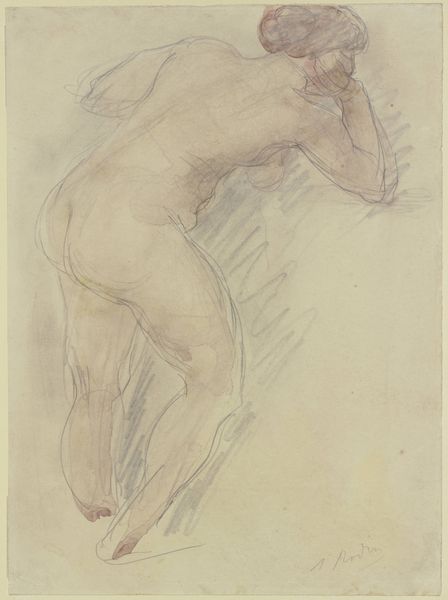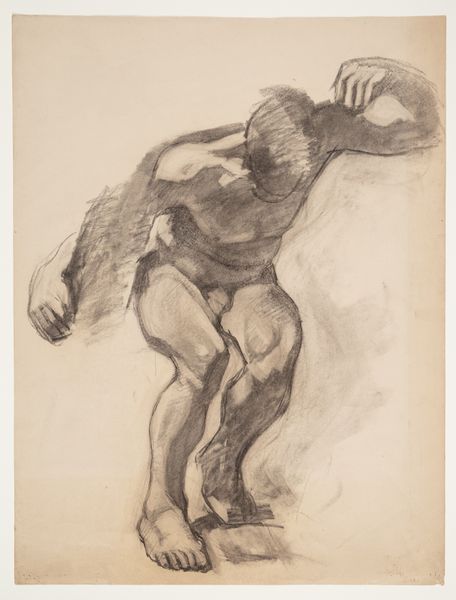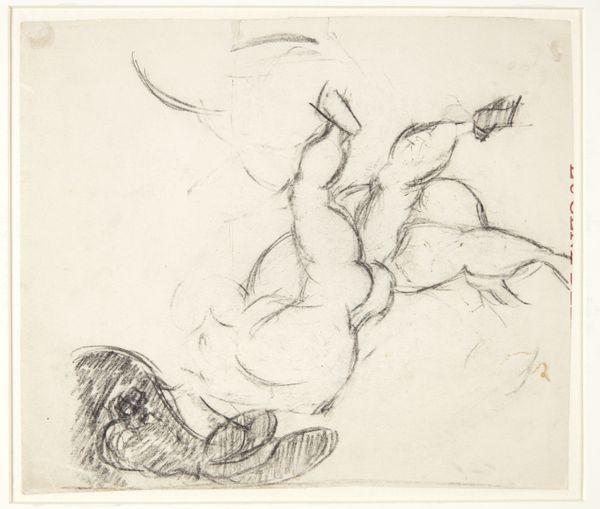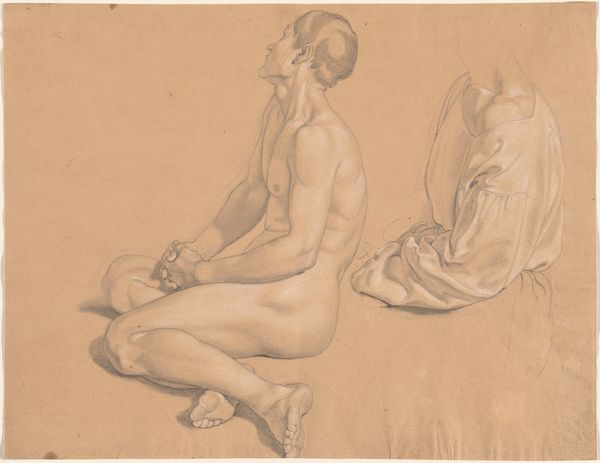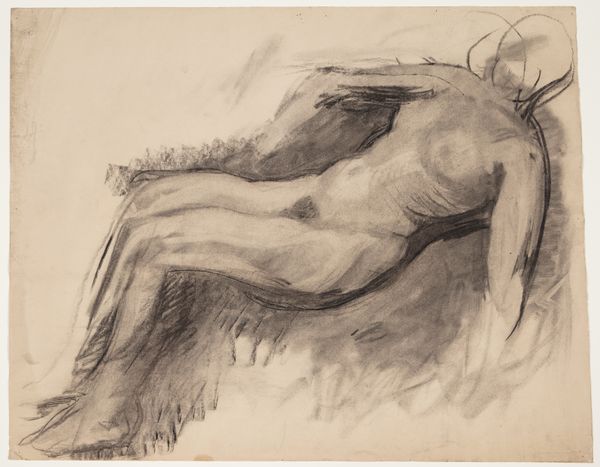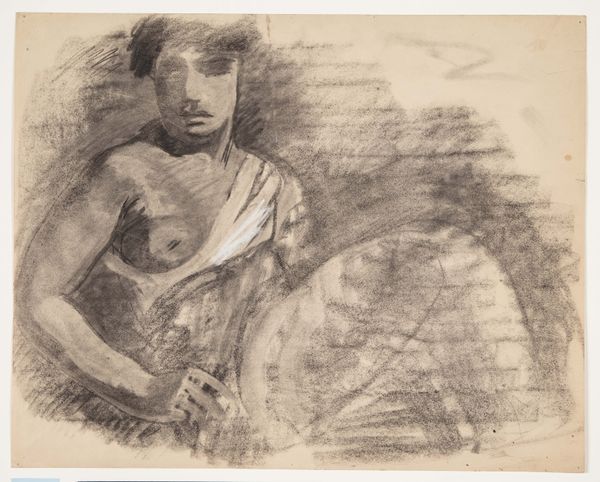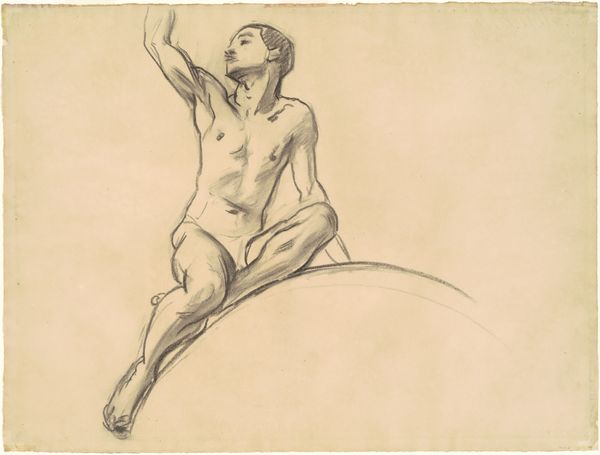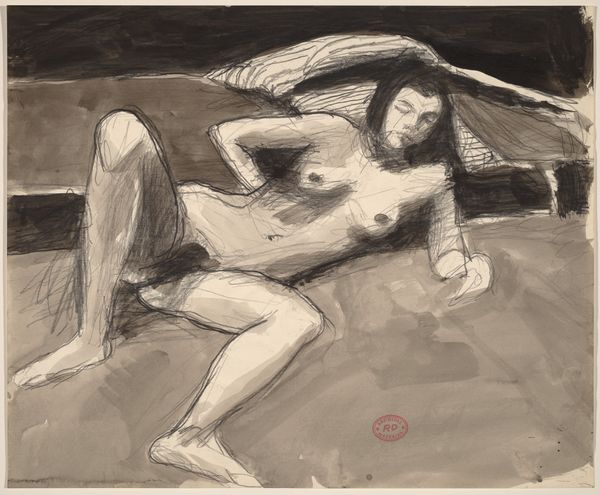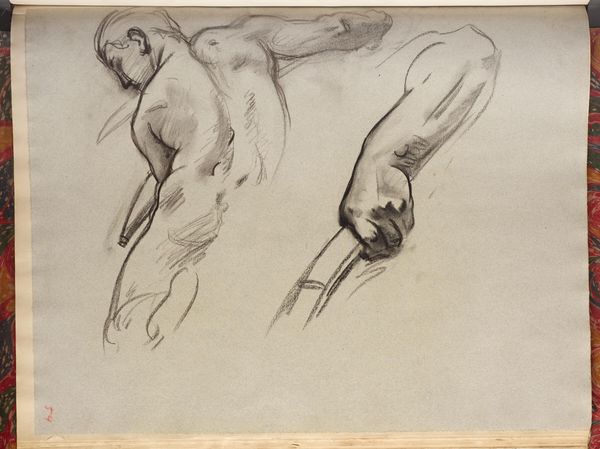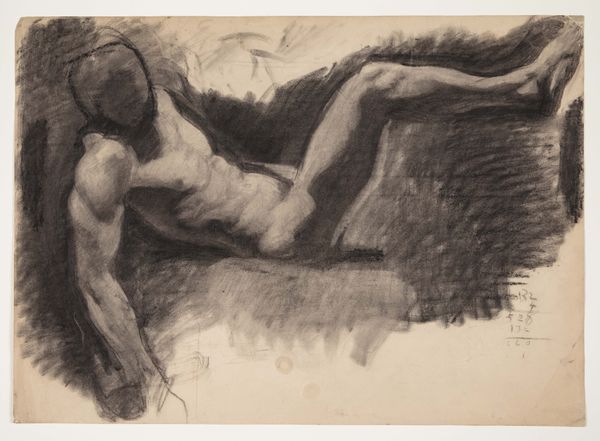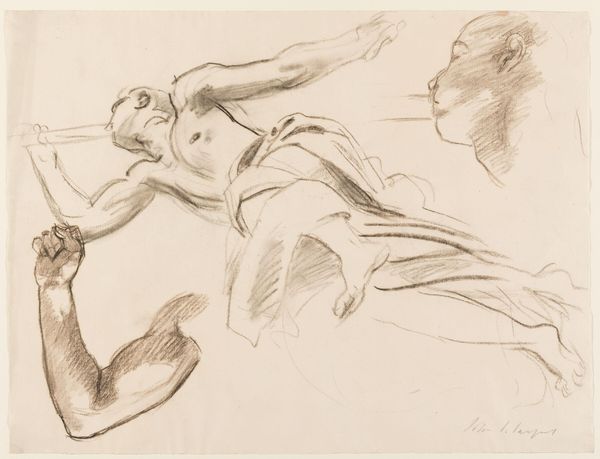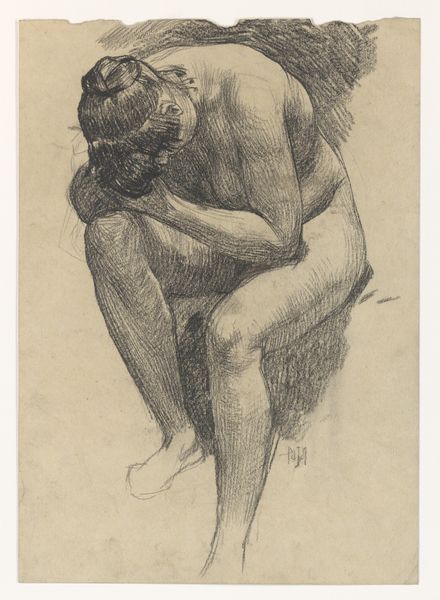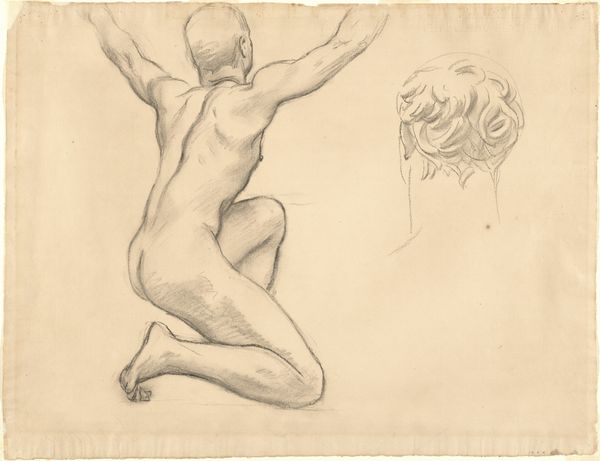
drawing, coloured-pencil, pencil
#
drawing
#
coloured-pencil
#
figuration
#
romanticism
#
pencil
#
academic-art
#
nude
Dimensions: sheet: 25.72 × 31.75 cm (10 1/8 × 12 1/2 in.)
Copyright: National Gallery of Art: CC0 1.0
Curator: Henri Lehmann’s "Study for ‘Rêve d'amour,’" executed in 1848 with pencil and colored pencil, offers us an intimate glimpse into the artist’s process. What strikes you first about it? Editor: There's a rawness to it—a dreamlike unfinished quality. The muscular figure, rendered in warm tones, seems caught between existing and dissolving into the paper itself. The lines are quite kinetic; the work vibrates with nascent potentiality. Curator: The very concept of “love’s dream,” so to speak, resonates deeply with prevailing Romantic motifs of that time. Observe how Lehmann employs the nude to symbolize not only vulnerability, but also, perhaps, idealized human form in that period. The way the male figure almost blends into an outline of the woman's figure—almost fading together. What kind of interpretation can you offer on these images? Editor: In terms of symbol and imagery, the man's partially shadowed face, tilted towards the blank outline of the female suggests desire, searching for a reflection or completion. That the woman is unfinished indicates not absence, but presence as imagined and envisioned; the love-dream is yet unfulfilled or is ever, tantalizingly, a space for subjective possibility and imagination. Curator: Let's talk about its aesthetic impact in our understanding. Lehmann's careful composition compels a reading of surfaces. Note, for instance, the interplay between precise contours versus rapidly sketched gestures of a form. See where there are shadows created with crosshatching versus the way colored pencils creates blocks of pigment. This all makes up for very charged visuality. Editor: Agreed. Beyond its aesthetic construction and medium, consider how Lehmann uses the suggestive power of the unfinished—to symbolize yearning and desire. The partial state of figures evokes cultural memories on dreams and othering from past art forms in a contemporary psychological mode. It represents an invitation to emotionally fill in what is unseen, to meet the work as a participant in its very conception and cultural inheritance. Curator: I find your reading astute. I come away admiring not only the skillful formal techniques but Lehmann's sensitivity in his composition, playing between absence and presence and between solid, definite form and light sketching. Editor: Indeed, analyzing Lehmann’s artistic practice while focusing our senses through history offers ways we can imagine love, yearning, and presence to its potentiality. It will inspire more readings to be explored.
Comments
No comments
Be the first to comment and join the conversation on the ultimate creative platform.
